Enhancement of radiosensitivity by the novel anticancer quinolone derivative vosaroxin in preclinical glioblastoma models
- PMID: 28415741
- PMCID: PMC5444710
- DOI: 10.18632/oncotarget.16168
Enhancement of radiosensitivity by the novel anticancer quinolone derivative vosaroxin in preclinical glioblastoma models
Abstract
Purpose: Glioblastoma multiforme (GBM) is the most aggressive brain tumor. The activity of vosaroxin, a first-in-class anticancer quinolone derivative that intercalates DNA and inhibits topoisomerase II, was investigated in GBM preclinical models as a single agent and combined with radiotherapy (RT).
Results: Vosaroxin showed antitumor activity in clonogenic survival assays, with IC50 of 10-100 nM, and demonstrated radiosensitization. Combined treatments exhibited significantly higher γH2Ax levels compared with controls. In xenograft models, vosaroxin reduced tumor growth and showed enhanced activity with RT; vosaroxin/RT combined was more effective than temozolomide/RT. Vosaroxin/RT triggered rapid and massive cell death with characteristics of necrosis. A minor proportion of treated cells underwent caspase-dependent apoptosis, in agreement with in vitro results. Vosaroxin/RT inhibited RT-induced autophagy, increasing necrosis. This was associated with increased recruitment of granulocytes, monocytes, and undifferentiated bone marrow-derived lymphoid cells. Pharmacokinetic analyses revealed adequate blood-brain penetration of vosaroxin. Vosaroxin/RT increased disease-free survival (DFS) and overall survival (OS) significantly compared with RT, vosaroxin alone, temozolomide, and temozolomide/RT in the U251-luciferase orthotopic model.
Materials and methods: Cellular, molecular, and antiproliferative effects of vosaroxin alone or combined with RT were evaluated in 13 GBM cell lines. Tumor growth delay was determined in U87MG, U251, and T98G xenograft mouse models. (DFS) and (OS) were assessed in orthotopic intrabrain models using luciferase-transfected U251 cells by bioluminescence and magnetic resonance imaging.
Conclusions: Vosaroxin demonstrated significant activity in vitro and in vivo in GBM models, and showed additive/synergistic activity when combined with RT in O6-methylguanine methyltransferase-negative and -positive cell lines.
Keywords: double-strand breaks; glioblastoma; radiotherapy; topoisomerase II; vosaroxin.
Conflict of interest statement
JAF was previously employed by and is a consultant for Sunesis Pharmaceuticals. GLG, AM, CM, FV, FM, AC, GR, LV, AV, EDC and CF have no conflicts of interest to disclose.
Figures

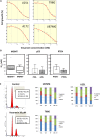
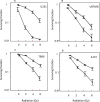
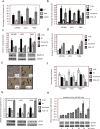
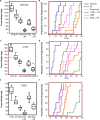

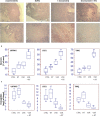
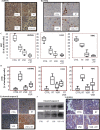

Similar articles
-
The first-in-class alkylating deacetylase inhibitor molecule tinostamustine shows antitumor effects and is synergistic with radiotherapy in preclinical models of glioblastoma.J Hematol Oncol. 2018 Feb 27;11(1):32. doi: 10.1186/s13045-018-0576-6. J Hematol Oncol. 2018. PMID: 29486795 Free PMC article.
-
Radiosensitization by the novel DNA intercalating agent vosaroxin.Radiat Oncol. 2012 Feb 27;7:26. doi: 10.1186/1748-717X-7-26. Radiat Oncol. 2012. PMID: 22369205 Free PMC article.
-
The DNA-PK Inhibitor VX-984 Enhances the Radiosensitivity of Glioblastoma Cells Grown In Vitro and as Orthotopic Xenografts.Mol Cancer Ther. 2018 Jun;17(6):1207-1216. doi: 10.1158/1535-7163.MCT-17-1267. Epub 2018 Mar 16. Mol Cancer Ther. 2018. PMID: 29549168 Free PMC article.
-
The preclinical discovery of vosaroxin for the treatment of acute myeloid leukemia.Expert Opin Drug Discov. 2017 Jul;12(7):747-753. doi: 10.1080/17460441.2017.1331215. Epub 2017 May 22. Expert Opin Drug Discov. 2017. PMID: 28504025 Review.
-
Molecular and Pharmacologic Properties of the Anticancer Quinolone Derivative Vosaroxin: A New Therapeutic Agent for Acute Myeloid Leukemia.Drugs. 2016 Sep;76(13):1245-1255. doi: 10.1007/s40265-016-0614-z. Drugs. 2016. PMID: 27484675 Free PMC article. Review.
Cited by
-
A complex suite of loci and elements in eukaryotic type II topoisomerases determine selective sensitivity to distinct poisoning agents.Nucleic Acids Res. 2019 Sep 5;47(15):8163-8179. doi: 10.1093/nar/gkz579. Nucleic Acids Res. 2019. PMID: 31287876 Free PMC article.
-
Considering the Experimental use of Temozolomide in Glioblastoma Research.Biomedicines. 2020 Jun 4;8(6):151. doi: 10.3390/biomedicines8060151. Biomedicines. 2020. PMID: 32512726 Free PMC article. Review.
-
Quercetin and Sodium Butyrate Synergistically Increase Apoptosis in Rat C6 and Human T98G Glioblastoma Cells Through Inhibition of Autophagy.Neurochem Res. 2019 Jul;44(7):1715-1725. doi: 10.1007/s11064-019-02802-8. Epub 2019 Apr 22. Neurochem Res. 2019. PMID: 31011879
-
Crocetin Mitigates Irradiation Injury in an In Vitro Model of the Pubertal Testis: Focus on Biological Effects and Molecular Mechanisms.Molecules. 2021 Mar 17;26(6):1676. doi: 10.3390/molecules26061676. Molecules. 2021. PMID: 33802807 Free PMC article.
-
The first-in-class alkylating deacetylase inhibitor molecule tinostamustine shows antitumor effects and is synergistic with radiotherapy in preclinical models of glioblastoma.J Hematol Oncol. 2018 Feb 27;11(1):32. doi: 10.1186/s13045-018-0576-6. J Hematol Oncol. 2018. PMID: 29486795 Free PMC article.
References
-
- Polley MY, Lamborn KR, Chang SM, Butowski N, Clarke JL, Prados M. Six-month progression-free survival as an alternative primary efficacy endpoint to overall survival in newly diagnosed glioblastoma patients receiving temozolomide. Neuro Oncol. 2010;12:274–82. doi: 10.1093/neuonc/nop034. - DOI - PMC - PubMed
-
- Ringel F, Pape H, Sabel M, Krex D, Bock HC, Misch M, Weyerbrock A, Westermaier T, Senft C, Schucht P, Meyer B, Simon M, group SNs Clinical benefit from resection of recurrent glioblastomas: results of a multicenter study including 503 patients with recurrent glioblastomas undergoing surgical resection. Neuro Oncol. 2016;18:96–104. doi: 10.1093/neuonc/nov145. - DOI - PMC - PubMed
MeSH terms
Substances
LinkOut - more resources
Full Text Sources
Other Literature Sources

